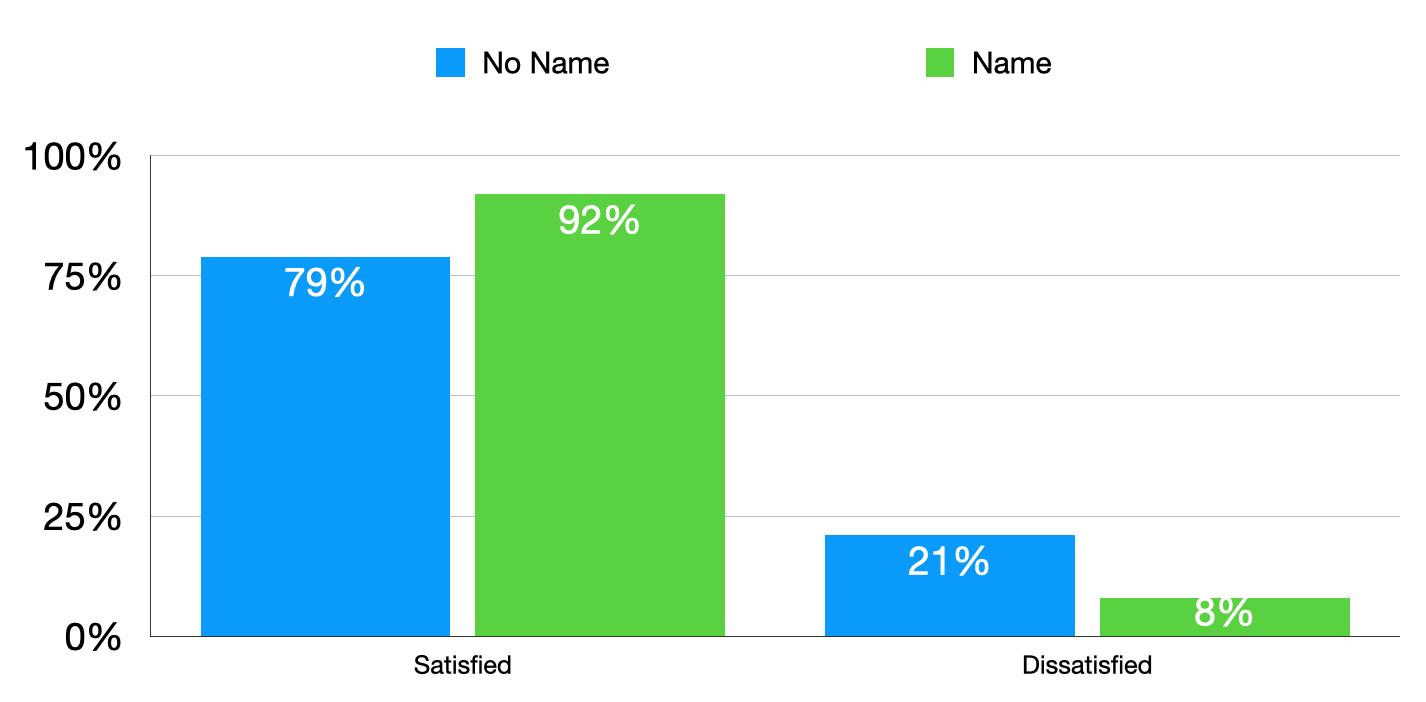You've seen the half-hearted attempts at rapport.
Employees say "welcome" with the enthusiasm of gray paint. They use your name like they're working through a checklist. (They are.)
It feels so transactional.
Rapport is essential to customer service. But here's the kicker—it has to be authentic. Asking a customer, "How's your day going so far?" with the sincerity of a robot can hurt the rapport you're trying to build.
So what makes it real?
I posed this question on LinkedIn, and it was a stumper. Most gave answers like, "You know it when you see it."
That's not much to go on. Try training an employee by telling them, “I can’t tell you exactly how to do it, but you’ll know it if you’re doing it right.”
You need to get much more specific if you want your employees to build authentic rapport. This guide can help.
What is customer rapport?
Let's start with a definition of rapport so we're all on the same page. The Merriam-Webster dictionary defines rapport this way:
a friendly, harmonious relationship
especially: a relationship characterized by agreement, mutual understanding, or empathy that makes communication possible or easy
Harmony is the foundation of customer service. You want customers to like you. And, you'd much prefer to like them back.
Rapport, by definition, makes communication easy. You can better understand their needs and customers are more accepting of your ideas.
It's also tied to better service outcomes. In one study of fast food chains, friendly employees helped compensate for long wait times and poor order accuracy.
What makes rapport genuine?
Authentic rapport goes beyond just acting out a corporate-mandated service script. It is an earnest attempt to create a friendly, harmonious connection with someone else.
Three things in particular help you establish real rapport.
Step 1: Smile with your eyes
There's a world of difference between a fake, forced smile and a real one. The fake smile communicates, "I have to be nice to you," while the real smile shares, "I'm genuinely happy to see you."
The eyes are a marker of a genuine smile.
The 19th-century scientist, Guillaume-Benjamin-Amand Duchenne de Boulogne discovered that facial muscles are connected to authentic smiles. Particularly, those around the eyes.
Today, genuine smiles are called "Duchenne smiles" after Duchenne's pioneering work.
Later, psychologist Paul Ekman mapped these facial movements and identified the specific markers of genuine and fake smiles:
the cheeks are pulled up and the skin below the eye may bag or bulge
the lower eyelid moves up and crows feet wrinkles may appear
the skin above the eye is pulled slightly down and inwards
On the other hand, a fake smile might look identical at the mouth, but doesn't feature the same muscle movement around the eyes.
Do you think you can spot a fake smile from a real one? Test your skills here.
Authentic smiles carry tremendous power. They can be contagious, and positively affect the moods of others. You've probably experienced this when a stranger smiled at you and you reflexively smiled back.
Step 2: Use consistent body language
The same words, said differently, can communicate very different messages.
Saying, "Hello" in a robotic monotone while frowning communicates unfriendliness or disinterest, even though the word itself is a common greeting.
On the other hand, a "Hello" delivered with a genuine smile, a warm tone of voice, and a wave instantly communicates friendliness and welcoming.
This makes it essential for our tone and body language to send the same friendly signals that we're trying to communicate with our words.
A psychologist named Albert Mehrabian conducted a series of experiments to show the impact of our words, tone, and body language on communicating emotions.
Published in his book, Silent Messages, Mehrabian's research revealed that body language carries the most weight when our words, tone, and body language send conflicting messages.
He estimated how much each contributed to likability when the words, tone, and body language didn’t match:
55% body language
38% tone of voice
7% words
These percentages have since been mischaracterized as holding true for all forms of communication, but that myth is a different story.
Mehrabian’s research explains why scripted rapport often falls flat. The employee might say the right words, but the customer won't believe them if those words are delivered with absolutely no feeling or intent.
If you want to make a customer feel welcome, you have to go beyond the words you use:
Start with a smile. That influences your tone.
Use open, friendly body language, such as a wave.
Increase the pitch and dynamics in your voice to convey warmth.
Step 3: Demonstrate interest
Rapport, by definition, is a relationship characterized by "agreement, mutual understanding, or empathy." In other words, you actually have to care about what the other person is thinking and feeling.
The best way to demonstrate true caring is to take an interest in your customer.
I learned this lesson the hard way when I was a teenager working in a clothing store. "How are you today?" quickly became my go-to customer greeting until a customer went off script with her reply.
"I'm terrible."
It was unexpected. I must have looked stunned, because the customer followed up with, "Well, you asked!"
Indeed, I did. From that day forward, I resolved to care about the questions I asked, even if it was something as innocuous as "How are you today?"
Of course, you can ask your customers better questions than that. Use the Five Question Technique to come up with a list of question that will capture your customer's attention, break the ice, and help you discover more about them.
Conclusion
The ultimate measure of rapport is your customer's reaction.
Do they return your smile or become stone-faced?
Does their body language relax or become tense?
Do their words and tone indicate enjoyment or are they guarded?
The goal is a smiling, relaxed customer who is enjoying themselves. That's the person who will be more open to your ideas and feel better about their experience.
You're tempted to think this is obvious. But the simple fact is employees at many companies aren't attempting to build genuine rapport.
Like any customer service skill, you have to put in the work to get better.














